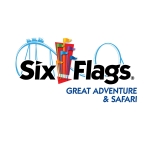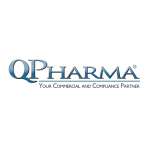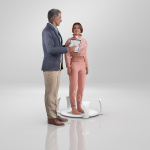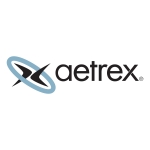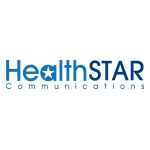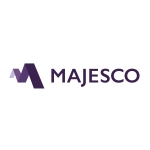Results From New Analysis Evaluating Health-Related Quality of Life (HRQoL) Based on Patient-Reported Outcomes Using Three HRQoL Scales
KENILWORTH, N.J., & WOODCLIFF LAKE, N.J. — (BUSINESS WIRE) —$MRK #MRK–Merck (NYSE: MRK), known as MSD outside the United States and Canada, and Eisai Inc. today announced new investigational data from the pivotal Phase 3 CLEAR (Study 307)/KEYNOTE-581 trial, which evaluated the combinations of KEYTRUDA, Merck’s anti-PD-1 therapy, plus LENVIMA, the orally available multiple receptor tyrosine kinase inhibitor discovered by Eisai, and LENVIMA plus everolimus versus sunitinib for the first-line treatment of patients with advanced renal cell carcinoma (RCC). Results from a new analysis evaluating health-related quality of life (HRQoL) based on patient-reported outcomes are being presented during an oral abstract session at the 2021 American Society of Clinical Oncology (ASCO) Annual Meeting (Abstract #4502). Data from CLEAR/KEYTNOTE-581 were originally presented at the 2021 Genitourinary Cancers Symposium (ASCO GU) and published in the New England Journal of Medicine, and data from this trial are currently under review with the U.S. Food and Drug Administration (FDA).

“This new analysis expands our understanding of the results we’ve seen from the CLEAR/KEYNOTE-581 trial in the treatment of patients with advanced renal cell carcinoma,” said Dr. Robert Motzer, Medical Oncologist, Kidney Cancer Section Head, Genitourinary Oncology Service, Memorial Sloan Kettering Cancer Center. “The additional data showed an improvement of specific health-related quality of life measures for patients who received KEYTRUDA plus LENVIMA compared with sunitinib, supporting the importance of this combination as a potential new first-line treatment option for patients.”
“We continue to see an increasing number of patients diagnosed with advanced renal cell carcinoma and remain committed to improving outcomes for those facing this difficult-to-treat disease,” said Dr. Gregory Lubiniecki, Vice President, Oncology Clinical Research, Merck Research Laboratories. “This new analysis builds on earlier findings from the CLEAR/KEYNOTE-581 trial and further supports the potential use of KEYTRUDA plus LENVIMA for the treatment of patients in the first-line setting.”
“This analysis addresses questions of interest to healthcare professionals who treat patients with advanced renal cell carcinoma and reinforces the KEYTRUDA plus LENVIMA combination as a possible new treatment option for patients with this disease,” said Dr. Takashi Owa, Chief Medicine Creation Officer and Chief Discovery Officer, Oncology Business Group at Eisai. “These results reflect Eisai and Merck’s shared commitment to relentlessly pursue thorough scientific investigations with the goal of improving cancer care.”
Data From Health‐Related Quality of Life (HRQoL) Analysis From CLEAR/KEYNOTE-581
In an analysis of a secondary endpoint of HRQoL scores in the CLEAR/KEYNOTE-581 trial, KEYTRUDA plus LENVIMA and LENVIMA plus everolimus were evaluated to determine the impact on HRQoL compared to sunitinib in patients with advanced RCC. This was assessed based on patient-reported outcomes using three HRQoL and symptom measures: Functional Assessment of Cancer Therapy Kidney Symptom Index – Disease-Related Symptoms (FKSI-DRS), European Organisation for Research and Treatment of Cancer Quality of Life Questionnaire for Patients With Cancer – Core 30 (EORTC QLQ-C30) and European Quality of Life Five-Dimensions – 3-Level System (EuroQoL EQ-5D-3L). Unless otherwise noted, HRQoL analyses were based on data from randomized patients who received at least one dose of study treatment. No adjustments for multiple testing or estimation were used; p-values (two-sided) and confidence intervals (CI) are nominal and descriptive. Longitudinal change from baseline was assessed by mixed model analysis. Least squares mean differences (LSMD) and 95% CI were calculated from baseline. Time to deterioration (based on changes in HRQoL and disease-related symptom scores ≥ meaningful thresholds) was assessed using time to first deterioration (TTD), which is the number of weeks between randomization and the first deterioration event, and time until definitive deterioration (TUDD), which is the number of weeks between randomization and the earliest deterioration event with no subsequent recovery above the deterioration threshold or no subsequent HRQoL assessment data. All times to deterioration were calculated and compared using the Kaplan-Meier method, stratified log-rank tests and Cox models.
KEYTRUDA plus LENVIMA demonstrated similar changes from baseline at mean follow-up (Week 46) on 14 out of 18 HRQoL and disease-related symptom scores and better HRQoL and disease-related symptom scores for the following measures (LSMD [95% CI]): physical functioning (3.01 [0.48, 5.54]), fatigue (-2.80 [-5.52, -0.08]), dyspnea (-2.79 [-5.33, -0.25]) and constipation (-2.19 [-4.19, -0.18]), as measured by the QLQ-C30, versus sunitinib. LENVIMA plus everolimus demonstrated similar changes from baseline at mean follow-up (Week 46) on 14 out of 18 HRQoL and disease-related symptom scores and worse HRQoL and disease-related symptom scores in the following measures (LSMD [95% CI]): Global Health Score/QoL (-2.81 [-5.08, -0.54]), pain (2.80 [0.11, 5.49]), appetite loss (4.23 [1.34, 7.13]) and diarrhea (5.26 [2.61, 7.91]) compared to sunitinib.
KEYTRUDA plus LENVIMA demonstrated a similar TTD in 14 out of 18 HRQoL and disease-related symptom scores, and a delay in TTD for physical functioning, dyspnea, appetite loss, and EQ-5D visual analog scale compared to sunitinib. KEYTRUDA plus LENVIMA demonstrated a delay in TUDD in 16 out of 18 HRQoL and disease-related symptom scores and a similar TUDD for cognitive functioning and financial difficulties compared to sunitinib.
Dr. Motzer has provided consulting and advisory services for Merck and Eisai.
About CLEAR (Study 307)/KEYNOTE-581
The CLEAR/KEYNOTE-581 trial is a multicenter, randomized, open-label, Phase 3 trial (ClinicalTrials.gov, NCT02811861) evaluating LENVIMA in combination with KEYTRUDA or in combination with everolimus versus sunitinib for the first-line treatment of patients with advanced RCC. The primary endpoint is progression-free survival, as assessed by independent review per RECIST v1.1. Secondary endpoints include overall survival, objective response rate, HRQoL and safety. A total of 1,069 patients were randomized (1:1:1) to receive:
- LENVIMA (20 mg orally once daily) in combination with KEYTRUDA (200 mg intravenously [IV] every three weeks for up to 24 months); or
- LENVIMA (18 mg orally once daily) in combination with everolimus (5 mg orally once daily); or
- Sunitinib (50 mg orally once daily for four weeks on treatment, followed by two weeks off treatment).
Treatment continued until unacceptable toxicity or disease progression as determined by the investigator and confirmed by independent radiologic review committee using RECIST v1.1. Administration of KEYTRUDA plus LENVIMA was permitted beyond RECIST-defined disease progression if the patient was clinically stable and considered by the investigator to be deriving clinical benefit. KEYTRUDA was continued for a maximum of 24 months; however, treatment with LENVIMA could be continued beyond 24 months. Assessment of tumor status was performed at baseline and then every eight weeks.
About Renal Cell Carcinoma (RCC)
Worldwide, it is estimated there were more than 431,000 new cases of kidney cancer diagnosed and more than 179,000 deaths from the disease in 2020. In the U.S., it is estimated there will be nearly 76,000 new cases of kidney cancer diagnosed and almost 14,000 deaths from the disease in 2021. Renal cell carcinoma is by far the most common type of kidney cancer; about nine out of 10 kidney cancer diagnoses are RCC. Renal cell carcinoma is about twice as common in men as in women. Most cases of RCC are discovered incidentally during imaging tests for other abdominal diseases. Approximately 30% of patients with RCC will have metastatic disease at diagnosis, and as many as 40% will develop metastases after primary surgical treatment for localized RCC. Survival is highly dependent on the stage at diagnosis, and the five-year survival rate is 13% for patients with metastatic disease.
About KEYTRUDA® (pembrolizumab) Injection, 100 mg
KEYTRUDA is an anti-PD-1 therapy that works by increasing the ability of the body’s immune system to help detect and fight tumor cells. KEYTRUDA is a humanized monoclonal antibody that blocks the interaction between PD-1 and its ligands, PD-L1 and PD-L2, thereby activating T lymphocytes which may affect both tumor cells and healthy cells.
Merck has the industry’s largest immuno-oncology clinical research program. There are currently more than 1,400 trials studying KEYTRUDA across a wide variety of cancers and treatment settings. The KEYTRUDA clinical program seeks to understand the role of KEYTRUDA across cancers and the factors that may predict a patient’s likelihood of benefitting from treatment with KEYTRUDA, including exploring several different biomarkers.
Selected KEYTRUDA® (pembrolizumab) Indications in the U.S.
Melanoma
KEYTRUDA is indicated for the treatment of patients with unresectable or metastatic melanoma.
KEYTRUDA is indicated for the adjuvant treatment of patients with melanoma with involvement of lymph node(s) following complete resection.
Non-Small Cell Lung Cancer
KEYTRUDA, in combination with pemetrexed and platinum chemotherapy, is indicated for the first-line treatment of patients with metastatic nonsquamous non-small cell lung cancer (NSCLC), with no EGFR or ALK genomic tumor aberrations.
KEYTRUDA, in combination with carboplatin and either paclitaxel or paclitaxel protein-bound, is indicated for the first-line treatment of patients with metastatic squamous NSCLC.
KEYTRUDA, as a single agent, is indicated for the first-line treatment of patients with NSCLC expressing PD-L1 [tumor proportion score (TPS) ≥1%] as determined by an FDA-approved test, with no EGFR or ALK genomic tumor aberrations, and is stage III where patients are not candidates for surgical resection or definitive chemoradiation, or metastatic.
KEYTRUDA, as a single agent, is indicated for the treatment of patients with metastatic NSCLC whose tumors express PD-L1 (TPS ≥1%) as determined by an FDA-approved test, with disease progression on or after platinum-containing chemotherapy. Patients with EGFR or ALK genomic tumor aberrations should have disease progression on FDA-approved therapy for these aberrations prior to receiving KEYTRUDA.
Head and Neck Squamous Cell Cancer
KEYTRUDA, in combination with platinum and fluorouracil (FU), is indicated for the first-line treatment of patients with metastatic or with unresectable, recurrent head and neck squamous cell carcinoma (HNSCC).
KEYTRUDA, as a single agent, is indicated for the first-line treatment of patients with metastatic or with unresectable, recurrent HNSCC whose tumors express PD-L1 [combined positive score (CPS) ≥1] as determined by an FDA-approved test.
KEYTRUDA, as a single agent, is indicated for the treatment of patients with recurrent or metastatic HNSCC with disease progression on or after platinum-containing chemotherapy.
Classical Hodgkin Lymphoma
KEYTRUDA is indicated for the treatment of adult patients with relapsed or refractory classical Hodgkin lymphoma (cHL).
KEYTRUDA is indicated for the treatment of pediatric patients with refractory cHL, or cHL that has relapsed after 2 or more lines of therapy.
Primary Mediastinal Large B-Cell Lymphoma
KEYTRUDA is indicated for the treatment of adult and pediatric patients with refractory primary mediastinal large B-cell lymphoma (PMBCL), or who have relapsed after 2 or more prior lines of therapy. KEYTRUDA is not recommended for treatment of patients with PMBCL who require urgent cytoreductive therapy.
Urothelial Carcinoma
KEYTRUDA is indicated for the treatment of patients with locally advanced or metastatic urothelial carcinoma (mUC) who are not eligible for cisplatin-containing chemotherapy and whose tumors express PD-L1 (CPS ≥10), as determined by an FDA-approved test, or in patients who are not eligible for any platinum-containing chemotherapy regardless of PD-L1 status. This indication is approved under accelerated approval based on tumor response rate and duration of response. Continued approval for this indication may be contingent upon verification and description of clinical benefit in confirmatory trials.
KEYTRUDA is indicated for the treatment of patients with locally advanced or metastatic urothelial carcinoma (mUC) who have disease progression during or following platinum-containing chemotherapy or within 12 months of neoadjuvant or adjuvant treatment with platinum-containing chemotherapy.
KEYTRUDA is indicated for the treatment of patients with Bacillus Calmette-Guerin (BCG)-unresponsive, high-risk, non-muscle invasive bladder cancer (NMIBC) with carcinoma in situ (CIS) with or without papillary tumors who are ineligible for or have elected not to undergo cystectomy.
Microsatellite Instability-High or Mismatch Repair Deficient Cancer
KEYTRUDA is indicated for the treatment of adult and pediatric patients with unresectable or metastatic microsatellite instability-high (MSI-H) or mismatch repair deficient (dMMR)
- solid tumors that have progressed following prior treatment and who have no satisfactory alternative treatment options, or
- colorectal cancer that has progressed following treatment with fluoropyrimidine, oxaliplatin, and irinotecan.
This indication is approved under accelerated approval based on tumor response rate and durability of response. Continued approval for this indication may be contingent upon verification and description of clinical benefit in the confirmatory trials. The safety and effectiveness of KEYTRUDA in pediatric patients with MSI-H central nervous system cancers have not been established.
Microsatellite Instability-High or Mismatch Repair Deficient Colorectal Cancer
KEYTRUDA is indicated for the first-line treatment of patients with unresectable or metastatic MSI-H or dMMR colorectal cancer (CRC).
Gastric Cancer
KEYTRUDA, in combination with trastuzumab, and fluoropyrimidine- and platinum-containing chemotherapy, is indicated for the first-line treatment of patients with locally advanced unresectable or metastatic HER2-positive gastric or gastroesophageal junction (GEJ) adenocarcinoma. This indication is approved under accelerated approval based on tumor response rate and durability of response. Continued approval for this indication may be contingent upon verification and description of clinical benefit in the confirmatory trials.
KEYTRUDA, as a single agent, is indicated for the treatment of patients with recurrent locally advanced or metastatic gastric or gastroesophageal junction (GEJ) adenocarcinoma whose tumors express PD-L1 (CPS ≥1) as determined by an FDA-approved test, with disease progression on or after two or more prior lines of therapy including fluoropyrimidine- and platinum-containing chemotherapy and if appropriate, HER2/neu-targeted therapy. This indication is approved under accelerated approval based on tumor response rate and durability of response. Continued approval for this indication may be contingent upon verification and description of clinical benefit in the confirmatory trials.
Esophageal Cancer
KEYTRUDA is indicated for the treatment of patients with locally advanced or metastatic esophageal or gastroesophageal junction (GEJ) (tumors with epicenter 1 to 5 centimeters above the GEJ) carcinoma that is not amenable to surgical resection or definitive chemoradiation either:
- in combination with platinum- and fluoropyrimidine-based chemotherapy, or
- as a single agent after one or more prior lines of systemic therapy for patients with tumors of squamous cell histology that express PD-L1 (CPS ≥10) as determined by an FDA-approved test.
Cervical Cancer
KEYTRUDA is indicated for the treatment of patients with recurrent or metastatic cervical cancer with disease progression on or after chemotherapy whose tumors express PD-L1 (CPS ≥1) as determined by an FDA-approved test. This indication is approved under accelerated approval based on tumor response rate and durability of response. Continued approval for this indication may be contingent upon verification and description of clinical benefit in the confirmatory trials.
Hepatocellular Carcinoma
KEYTRUDA is indicated for the treatment of patients with hepatocellular carcinoma (HCC) who have been previously treated with sorafenib. This indication is approved under accelerated approval based on tumor response rate and durability of response. Continued approval for this indication may be contingent upon verification and description of clinical benefit in the confirmatory trials.
Merkel Cell Carcinoma
KEYTRUDA is indicated for the treatment of adult and pediatric patients with recurrent locally advanced or metastatic Merkel cell carcinoma (MCC). This indication is approved under accelerated approval based on tumor response rate and durability of response. Continued approval for this indication may be contingent upon verification and description of clinical benefit in the confirmatory trials.
Renal Cell Carcinoma
KEYTRUDA, in combination with axitinib, is indicated for the first-line treatment of patients with advanced renal cell carcinoma (RCC).
Endometrial Carcinoma
KEYTRUDA, in combination with LENVIMA, is indicated for the treatment of patients with advanced endometrial carcinoma that is not MSI-H or dMMR, who have disease progression following prior systemic therapy and are not candidates for curative surgery or radiation. This indication is approved under accelerated approval based on tumor response rate and durability of response. Continued approval for this indication may be contingent upon verification and description of clinical benefit in the confirmatory trial.
Tumor Mutational Burden-High
KEYTRUDA is indicated for the treatment of adult and pediatric patients with unresectable or metastatic tumor mutational burden-high (TMB-H) [≥10 mutations/megabase] solid tumors, as determined by an FDA-approved test, that have progressed following prior treatment and who have no satisfactory alternative treatment options. This indication is approved under accelerated approval based on tumor response rate and durability of response. Continued approval for this indication may be contingent upon verification and description of clinical benefit in the confirmatory trials. The safety and effectiveness of KEYTRUDA in pediatric patients with TMB-H central nervous system cancers have not been established.
Cutaneous Squamous Cell Carcinoma
KEYTRUDA is indicated for the treatment of patients with recurrent or metastatic cutaneous squamous cell carcinoma (cSCC) that is not curable by surgery or radiation.
Triple-Negative Breast Cancer
KEYTRUDA, in combination with chemotherapy, is indicated for the treatment of patients with locally recurrent unresectable or metastatic triple-negative breast cancer (TNBC) whose tumors express PD-L1 (CPS ≥10) as determined by an FDA-approved test. This indication is approved under accelerated approval based on progression-free survival. Continued approval for this indication may be contingent upon verification and description of clinical benefit in the confirmatory trials.
Selected Important Safety Information for KEYTRUDA
Severe and Fatal Immune-Mediated Adverse Reactions
KEYTRUDA is a monoclonal antibody that belongs to a class of drugs that bind to either the programmed death receptor-1 (PD-1) or the programmed death ligand 1 (PD-L1), blocking the PD-1/PD-L1 pathway, thereby removing inhibition of the immune response, potentially breaking peripheral tolerance and inducing immune-mediated adverse reactions. Immune-mediated adverse reactions, which may be severe or fatal, can occur in any organ system or tissue, can affect more than one body system simultaneously, and can occur at any time after starting treatment or after discontinuation of treatment. Important immune-mediated adverse reactions listed here may not include all possible severe and fatal immune-mediated adverse reactions.
Monitor patients closely for symptoms and signs that may be clinical manifestations of underlying immune-mediated adverse reactions. Early identification and management are essential to ensure safe use of anti–PD-1/PD-L1 treatments. Evaluate liver enzymes, creatinine, and thyroid function at baseline and periodically during treatment. In cases of suspected immune-mediated adverse reactions, initiate appropriate workup to exclude alternative etiologies, including infection. Institute medical management promptly, including specialty consultation as appropriate.
Withhold or permanently discontinue KEYTRUDA depending on severity of the immune-mediated adverse reaction. In general, if KEYTRUDA requires interruption or discontinuation, administer systemic corticosteroid therapy (1 to 2 mg/kg/day prednisone or equivalent) until improvement to Grade 1 or less. Upon improvement to Grade 1 or less, initiate corticosteroid taper and continue to taper over at least 1 month. Consider administration of other systemic immunosuppressants in patients whose adverse reactions are not controlled with corticosteroid therapy.
Immune-Mediated Pneumonitis
KEYTRUDA can cause immune-mediated pneumonitis. The incidence is higher in patients who have received prior thoracic radiation. Immune-mediated pneumonitis occurred in 3.4% (94/2799) of patients receiving KEYTRUDA, including fatal (0.1%), Grade 4 (0.3%), Grade 3 (0.9%), and Grade 2 (1.3%) reactions. Systemic corticosteroids were required in 67% (63/94) of patients. Pneumonitis led to permanent discontinuation of KEYTRUDA in 1.3% (36) and withholding in 0.9% (26) of patients. All patients who were withheld reinitiated KEYTRUDA after symptom improvement; of these, 23% had recurrence. Pneumonitis resolved in 59% of the 94 patients.
Pneumonitis occurred in 8% (31/389) of adult patients with cHL receiving KEYTRUDA as a single agent, including Grades 3-4 in 2.3% of patients. Patients received high-dose corticosteroids for a median duration of 10 days (range: 2 days to 53 months). Pneumonitis rates were similar in patients with and without prior thoracic radiation. Pneumonitis led to discontinuation of KEYTRUDA in 5.4% (21) of patients. Of the patients who developed pneumonitis, 42% of these patients interrupted KEYTRUDA, 68% discontinued KEYTRUDA, and 77% had resolution.
Immune-Mediated Colitis
KEYTRUDA can cause immune-mediated colitis, which may present with diarrhea. Cytomegalovirus infection/reactivation has been reported in patients with corticosteroid-refractory immune-mediated colitis. In cases of corticosteroid-refractory colitis, consider repeating infectious workup to exclude alternative etiologies. Immune-mediated colitis occurred in 1.7% (48/2799) of patients receiving KEYTRUDA, including Grade 4 (<0.1%), Grade 3 (1.1%), and Grade 2 (0.4%) reactions. Systemic corticosteroids were required in 69% (33/48); additional immunosuppressant therapy was required in 4.
Contacts
Merck Media Relations
Melissa Moody: (215) 407-3536
Justine Moore: (347) 281-3754
Merck Investor Relations
Peter Dannenbaum: (908) 740-1037
Courtney Ronaldo: (908) 740-6132
Eisai Inc. Media Relations
Michele Randazzo: (551) 579-4465
Read full story here

